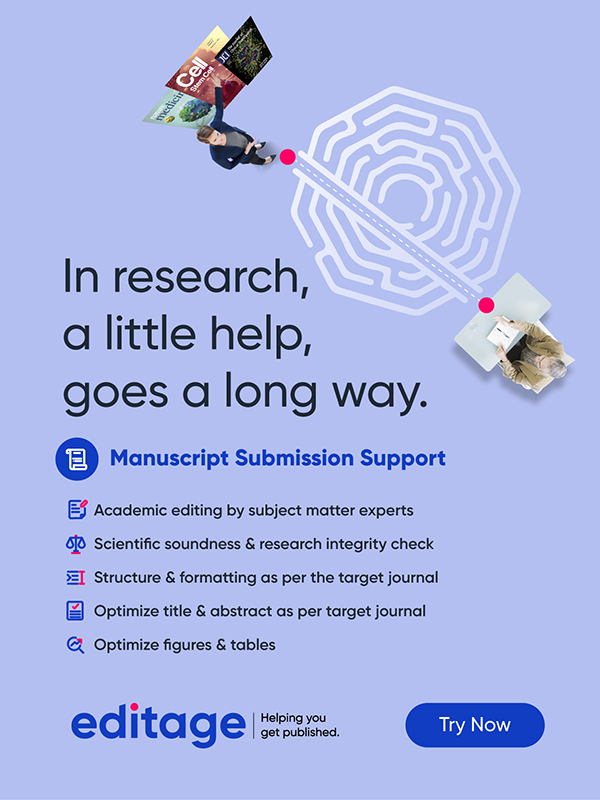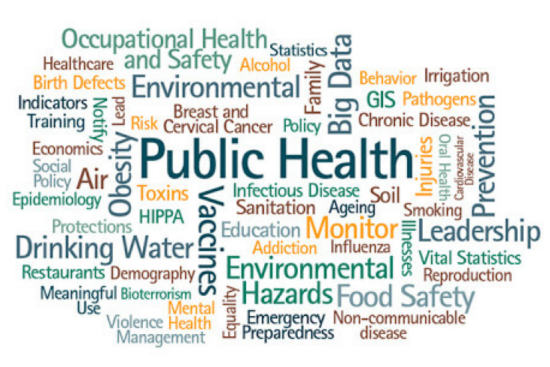
|
Getting your Trinity Audio player ready...
|
Editor’s note: This article was originally published on January 2nd, 2018 and can be read in the original form at: https://www.editage.com/insights/5-pre-submission-tips-for-corresponding-authors?refer=article-detail-series
Who is a corresponding author of a paper?
To understand this let’s first look at the criteria for authorship as defined by the International Committee of Medical Journal Editors (ICMJE). There different types of contributors for a research paper. An author is someone who has made significant contribution to the conceptualization and design process of a study as well as to the drafting and final approval of a manuscript. The role of the corresponding author is a traditional one. The ICMJE author guidelines describe a corresponding author as follows:
The corresponding author is the one individual who takes primary responsibility for communication with the journal during the manuscript submission, peer review, and publication process, and typically ensures that all the journal’s administrative requirements, such as providing details of authorship, ethics committee approval, clinical trial registration documentation, and gathering conflict of interest forms and statements, are properly completed, although these duties may be delegated to one or more coauthors.
Thus, a corresponding author is someone who has not only contributed to the paper significantly but also has the ability to ensure that it goes through the publication process by following a whole lot of essential steps. The reason why PIs are usually the corresponding authors of papers is that they are at the center of all the research they are supervising and have enough publication experience to understand what an ideal submission package should contain.
What am I expected to do as a corresponding author?
As a corresponding author you are responsible for several critical aspects at all stages of a study’s dissemination – before and after publication. Let us first look at what you need to do before your manuscript is submitted to the journal.
-
- Ensure that major deadlines are met: Since you are in charge of all communication related to the article, you may also need to regularly check on the progress of your co-authors to make sure that they deliver their contributions on time. This is critical in multi-author papers where contributors are spread across different locations. A delay by one contributor could lead to a delay in the submission of the paper. However, remember that you should think of yourself as a time keeper and a coordinator for the paper to be published, not a team leader who directs people on what they are supposed to do. The contributions expected from all authors of the paper should be clarified and agreed upon at the outset.
- Ensure that major deadlines are met: Since you are in charge of all communication related to the article, you may also need to regularly check on the progress of your co-authors to make sure that they deliver their contributions on time. This is critical in multi-author papers where contributors are spread across different locations. A delay by one contributor could lead to a delay in the submission of the paper. However, remember that you should think of yourself as a time keeper and a coordinator for the paper to be published, not a team leader who directs people on what they are supposed to do. The contributions expected from all authors of the paper should be clarified and agreed upon at the outset.
-
- Prepare a submission-ready manuscript: Ensure that the manuscript that is being submitted to the journal is well-written and well-presented. This includes all the IMRAD sections (Introduction, Methods, Results, Discussion and Conclusion), title, keywords, abstract, figures and tables, in text citations, and reference list. If your paper involves multiple authors with each author contributing a different part, it is your job to make sure that all their contributions are reflected appropriately and the paper reads like a unified whole, and not like a disjointed motley of voices put together by different people.
- Prepare a submission-ready manuscript: Ensure that the manuscript that is being submitted to the journal is well-written and well-presented. This includes all the IMRAD sections (Introduction, Methods, Results, Discussion and Conclusion), title, keywords, abstract, figures and tables, in text citations, and reference list. If your paper involves multiple authors with each author contributing a different part, it is your job to make sure that all their contributions are reflected appropriately and the paper reads like a unified whole, and not like a disjointed motley of voices put together by different people.
-
- Put together a submission package: Once you have everything from all the authors, it is your job to put together a submission package for the journal. Make a list of everything the journal needs – consent forms, ethical approval from the relevant board, etc. Make sure the manuscript is prepared based on the target journal’s instructions and you have everything you need at the time of submission. Note that for certain types of research the informed consent of enrolled patients and ethical board approval need to be obtained before the study; without these the paper might not be accepted. As the corresponding author, you will be expected to have an understanding of these protocols and make sure the relevant documents are in place at the time of submission.
- Put together a submission package: Once you have everything from all the authors, it is your job to put together a submission package for the journal. Make a list of everything the journal needs – consent forms, ethical approval from the relevant board, etc. Make sure the manuscript is prepared based on the target journal’s instructions and you have everything you need at the time of submission. Note that for certain types of research the informed consent of enrolled patients and ethical board approval need to be obtained before the study; without these the paper might not be accepted. As the corresponding author, you will be expected to have an understanding of these protocols and make sure the relevant documents are in place at the time of submission.
-
- Get all author details right: Make sure you have the names of all the authors of your manuscript as well as clarity on the order in which authors should be listed. The order of authors should be finalized after discussion with all the authors to ensure that there is no dispute later. This is typically decided at an early stage, even before the paper is written. Make sure all email addresses and affiliations are accurate and current. Get written, signed consent from all authors about the authorship details and share this with the journal along with your submission package. For multi-author papers, some journals require an authorship contribution statement outlining the role played by each author: this statement needs to be approved and signed by all the authors of the study. As the corresponding author, you need to fill in this document and send it to the journal.
- Get all author details right: Make sure you have the names of all the authors of your manuscript as well as clarity on the order in which authors should be listed. The order of authors should be finalized after discussion with all the authors to ensure that there is no dispute later. This is typically decided at an early stage, even before the paper is written. Make sure all email addresses and affiliations are accurate and current. Get written, signed consent from all authors about the authorship details and share this with the journal along with your submission package. For multi-author papers, some journals require an authorship contribution statement outlining the role played by each author: this statement needs to be approved and signed by all the authors of the study. As the corresponding author, you need to fill in this document and send it to the journal.
-
- Ensure ethical practices are followed: As corresponding author it is your job to ensure that the manuscript is prepared and submitted ethically. You (or your co-authors) should not be accused of any kind of malpractice such as salami slicing, plagiarism or self-plagiarism, simultaneous submission or duplicate publication, or data fabrication or falsification. This is a big responsibility and you need to coordinate with all authors to make sure that they too follow ethical best practices.
- Ensure ethical practices are followed: As corresponding author it is your job to ensure that the manuscript is prepared and submitted ethically. You (or your co-authors) should not be accused of any kind of malpractice such as salami slicing, plagiarism or self-plagiarism, simultaneous submission or duplicate publication, or data fabrication or falsification. This is a big responsibility and you need to coordinate with all authors to make sure that they too follow ethical best practices.
- Take the lead on open access: If you (and your co-authors) have chosen an open access route, as corresponding author you need to take the lead on open access and take care of all formalities around it – manage the payment and invoicing of article processing charges (APCs), ensure that funder-specific or institution-specific submission requirements are met, deposit the paper in a repository if required, and so on.
To know more about our services, click here: https://www.editage.us/campaigns/manuscriptsubmissionsupport









Leave a Reply